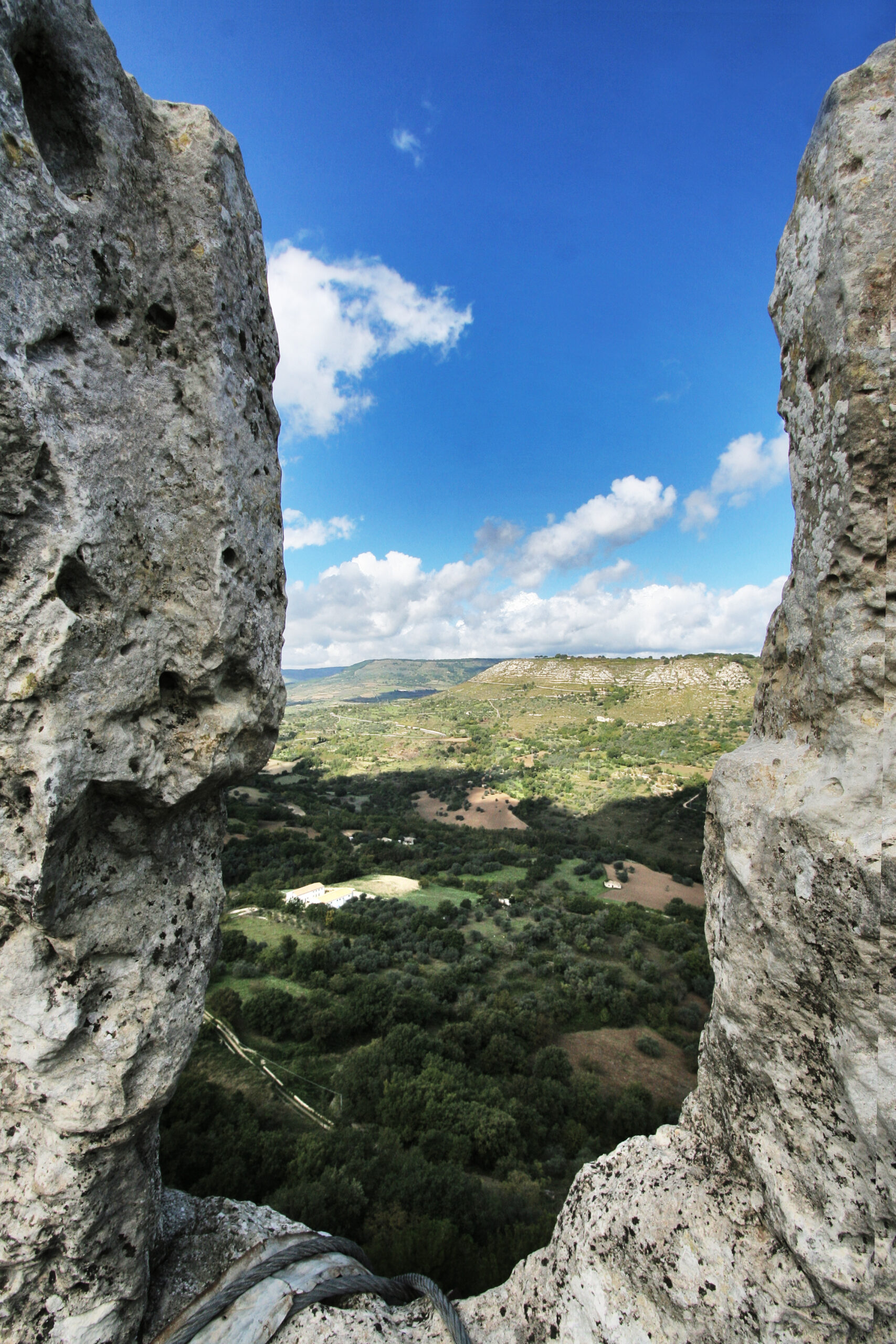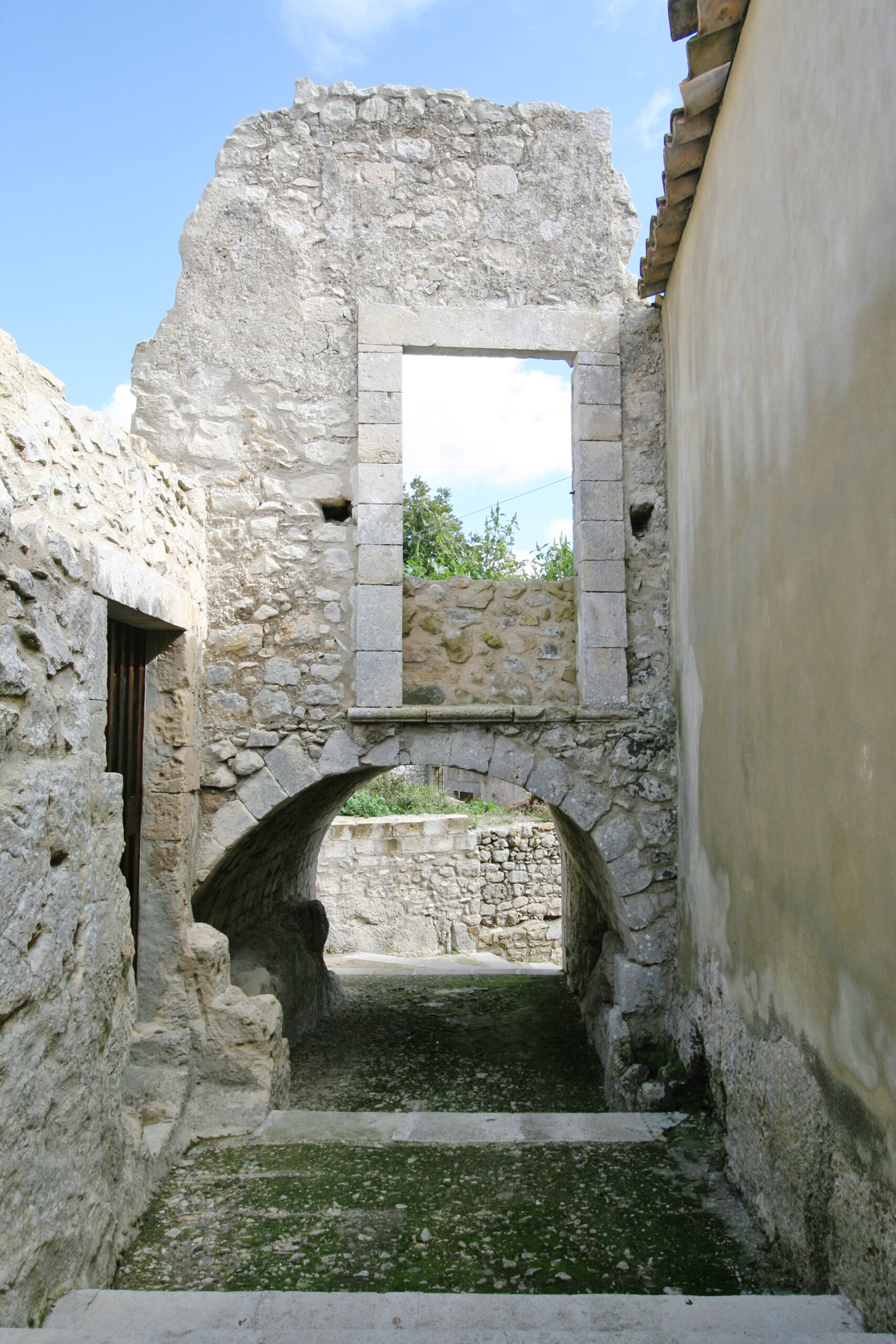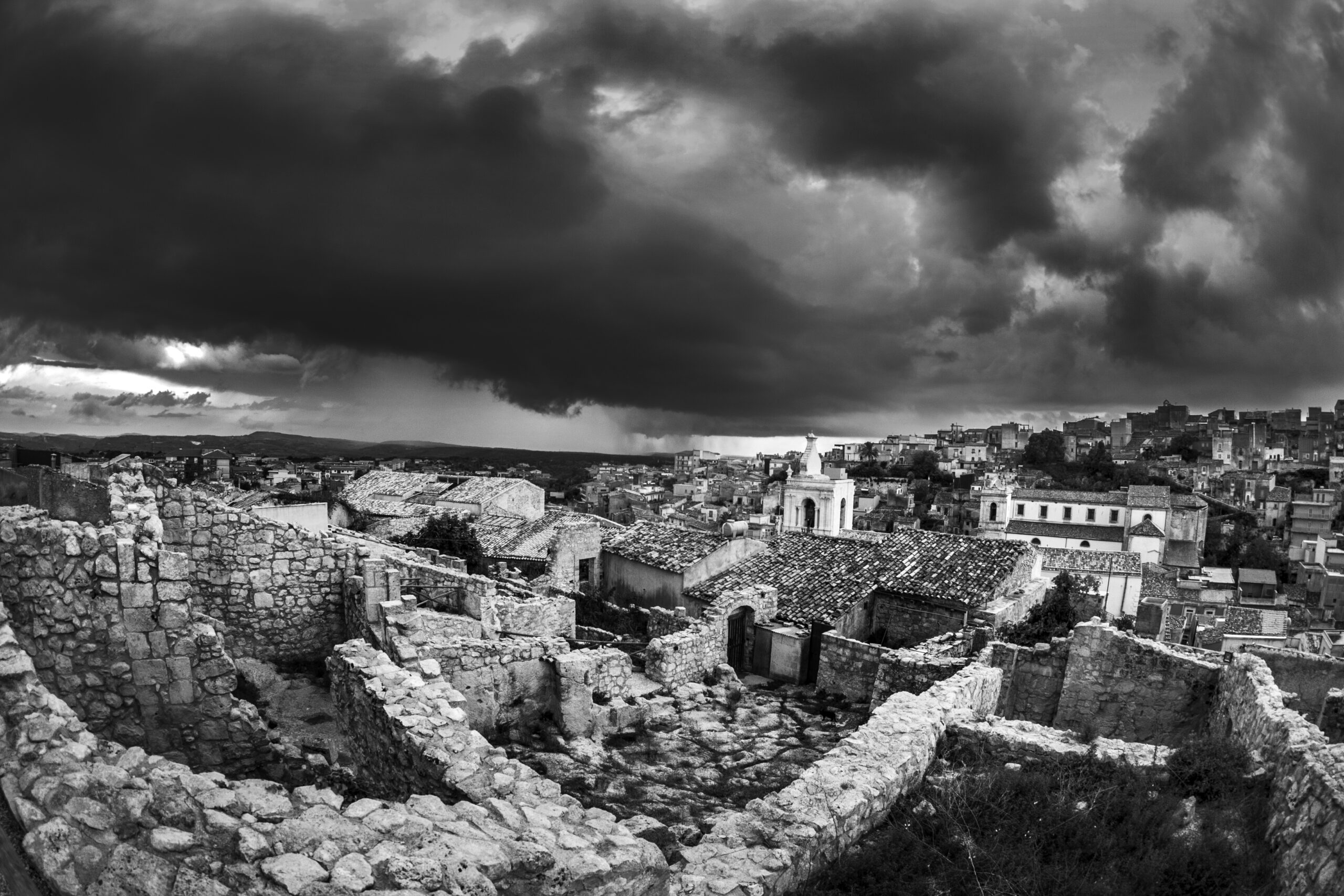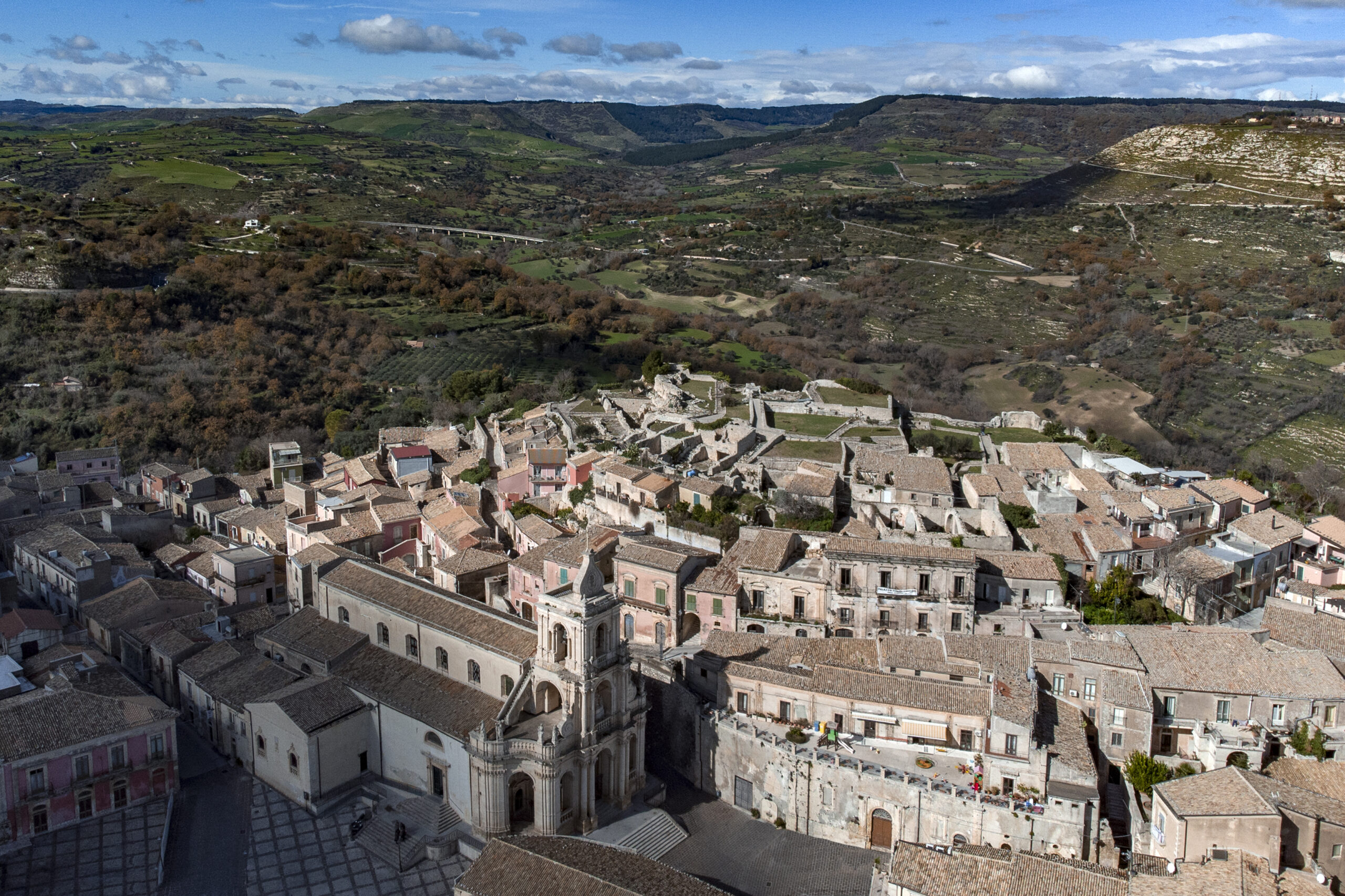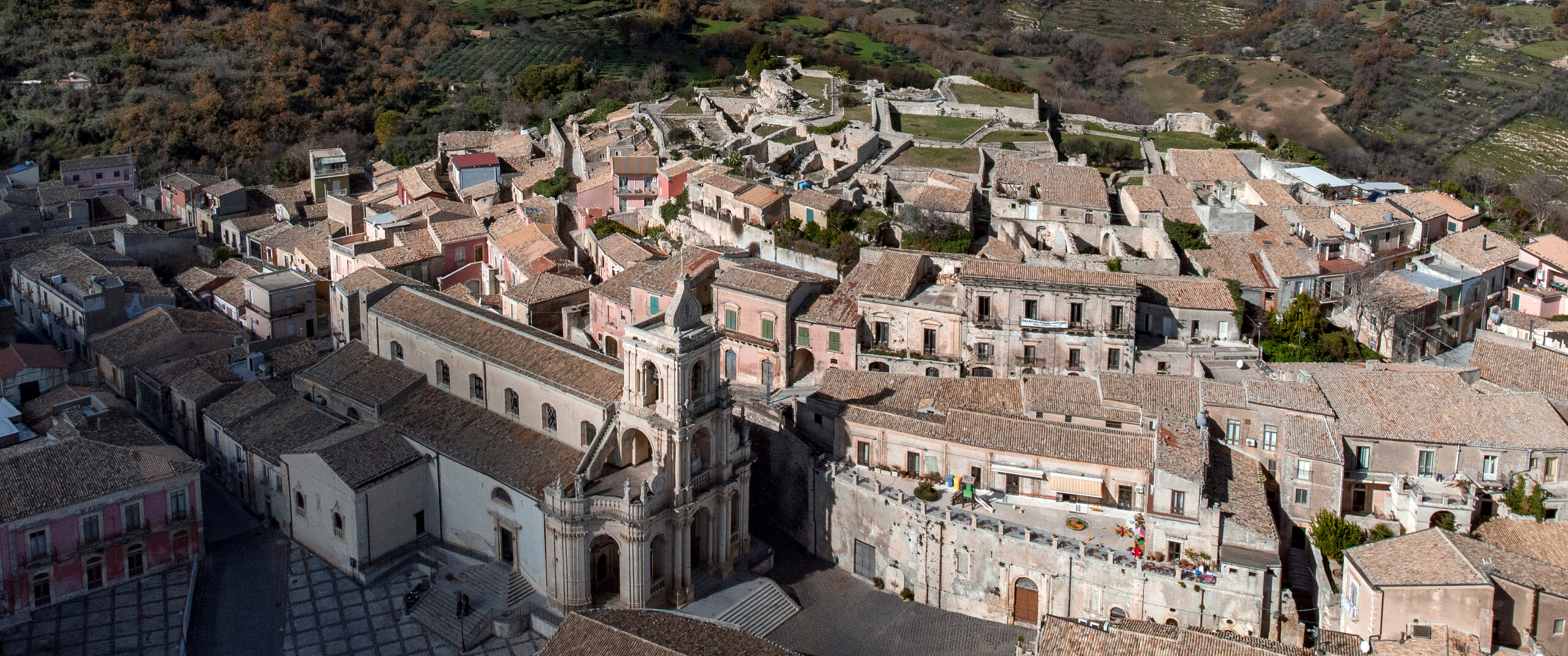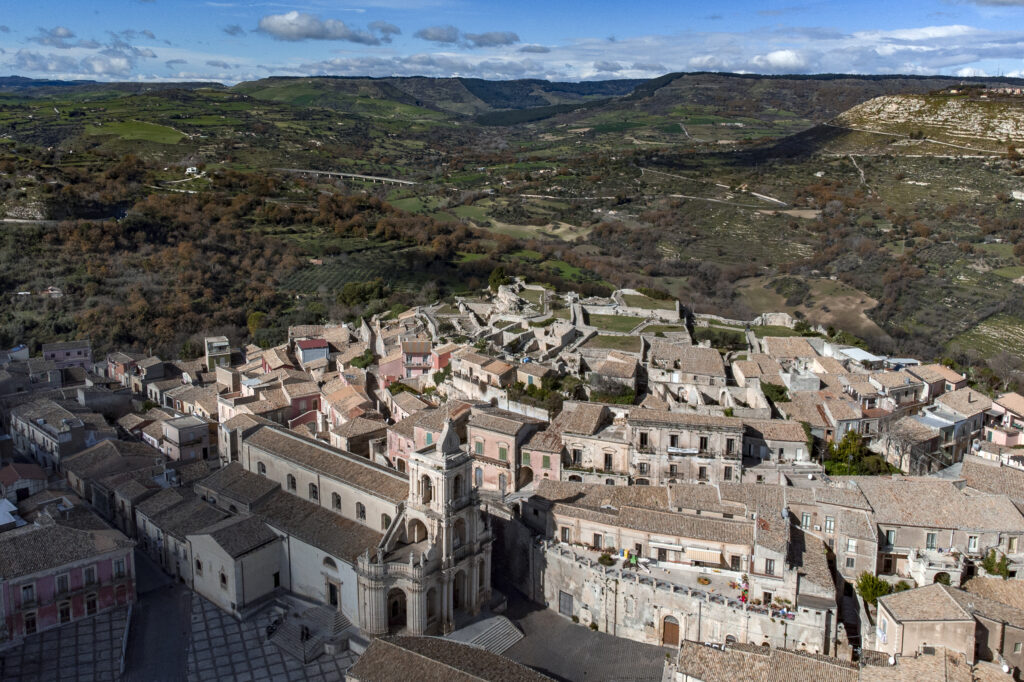
The majestic Norman castle used to rise in the historic medieval settlement, near Saint Paul’s Basilica. The first documentation witnessing its existence can be dated to 827: the year of the Muslim conquest. In Medieval times, Palazzolo was a baronial town and the castle, located on the top of a hill, was the residence of the baron as well as the seat of civil power.
Several lordships came into succession over time: Albertus of Palatiolo, Alaimo from Lentini, Guglielmo De Castellar, Gilberto Centellis, and then the baronies of the Alagona, Santapau and Ruffo until 1812 – the year when feudalism was abolished.
The echo of past happenings can still be perceived among the paths of the Castle: the weapons, the love stories, the betrayals…; there are some who swear they have seen the restless soul of Artale d’Alagona – killed by his brother Ponzio in 1533 wandering on those paths at night. As a matter of fact, it was right after that crime that the castle became uninhabited and only its basements went on being used as a prison.
Abandoned after the 1693 earthquake, only ruins remain today of the Castle: part of the moat, the base of the towers, a few hypogeums, the cisterns and in the smaller courtyard a part of the battlements carved in the living rock.
Recent restoration works uncovered the old plant of the Castle, the two courtyards, the towers, the cellars, the warehouses, and some traces of the landing.
The original materials can be admired in Palazzo Ferla di Tristaino, Palazzo Calendoli and the Mother-Church. From the site it is possible to admire a breathtaking view of the
Anapo Valley.
